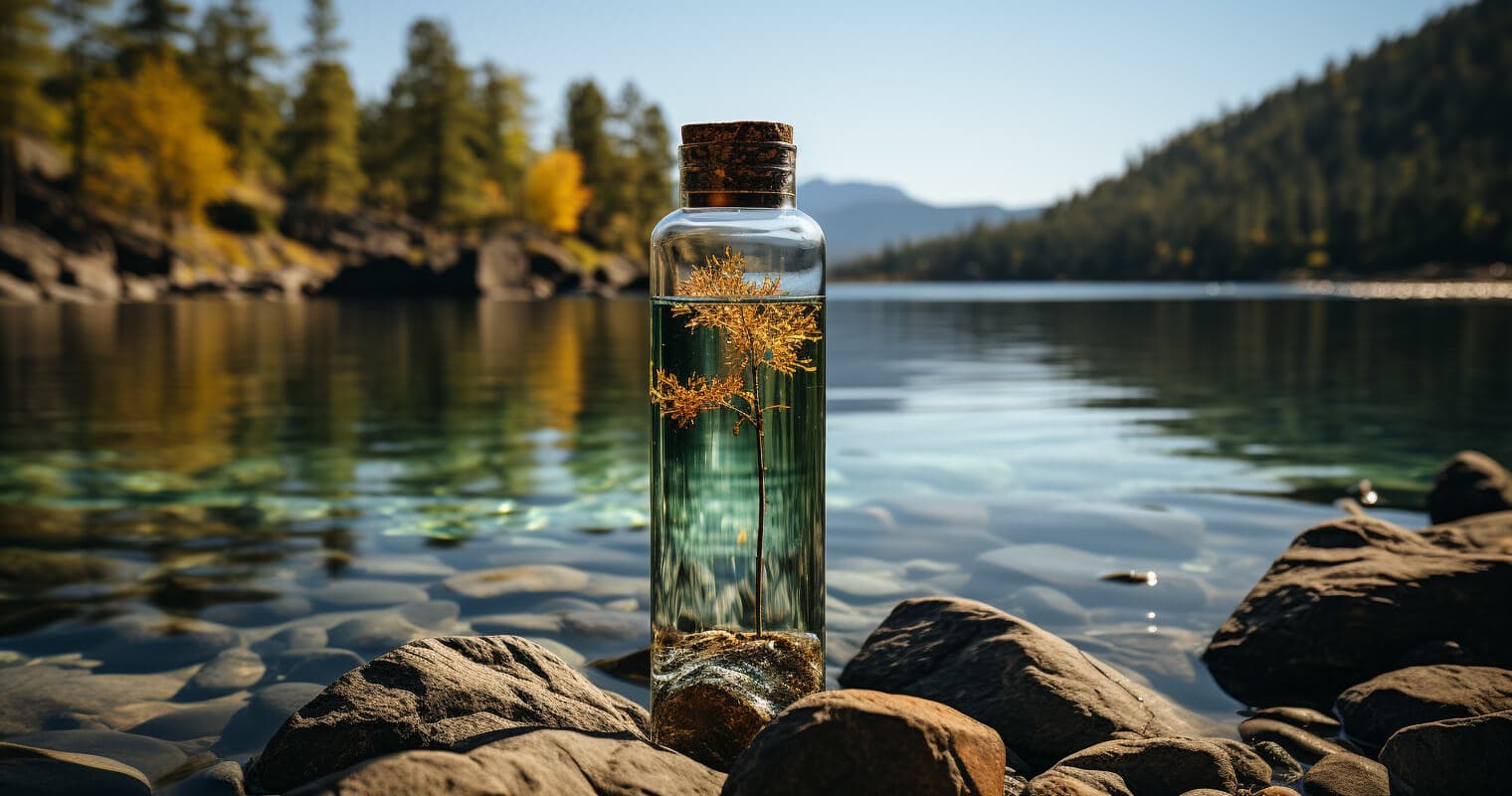The Ten Essentials for Camping and Hiking

Camping and hiking are fantastic ways to connect with nature, challenge yourself, and experience the sense of adventure that comes with exploring the great outdoors. However, ensuring a safe and enjoyable trip requires thoughtful preparation and the right gear. Enter “The Ten Essentials” - a list that outlines the must-have items every camper or hiker should carry, regardless of the journey’s length or difficulty.
The “Ten Essentials” is a list first assembled in the 1930s by The Mountaineers, a Seattle-based organization for climbers and outdoor adventurers, to help people be prepared for emergency situations in the outdoors. The classic list included a map, compass, sunglasses and sunscreen, extra clothing, headlamp/flashlight, first-aid supplies, firestarter, matches, knife, and extra food.
The list has evolved over the years from a literal list of items to a list of systems or functionalities that are essential for outdoor safety.
Updated Ten Essential Systems
The updated “systems” approach to the Ten Essentials, also by The Mountaineers, includes:
- Navigation (map and compass)
- Sun protection (sunglasses and sunscreen)
- Insulation (extra clothing)
- Illumination (headlamp/flashlight)
- First-aid supplies
- Fire (waterproof matches/lighter/candles)
- Repair kit and tools
- Nutrition (extra food)
- Hydration (extra water)
- Emergency shelter (tent/plastic tube tent/garbage bag)
The idea is to have the tools to respond positively to accidents and emergencies, and to stop emergencies before they start. It should be noted that this list is a starting point, and depending on the length and remoteness of your trip, season, weather, and personal preferences, your needs might vary.
1. Navigation
In the wilderness, getting lost isn’t just an inconvenience—it can be a matter of life and death. A detailed topographic map of the area you’re exploring should always be your primary navigation tool. In addition, a compass, preferably a sighting compass for increased accuracy, is a must-have. While GPS devices and smartphones with navigation apps can be handy, they should be seen as supplements to, not replacements for, a physical map and compass due to the risk of signal loss or battery failure. Let’s go over each item in more detail:
- Map: Always bring a topographic map on your trips, unless it’s a short, unmistakable footpath or a well-trodden nature trail.
- Compass: A compass, along with the ability to read a map, is crucial if you lose your way in the wilderness. While many gadgets like smartphones, GPS devices, and watches have digital compasses, it’s smart to have a traditional baseplate compass as well. It’s extremely light and doesn’t need batteries, making it an invaluable reserve.
Remember: In case of emergencies, a compass with a sighting mirror can help signal a helicopter or rescuer by reflecting sunlight.
- GPS device: A GPS device lets you pinpoint your location on an electronic map. Outdoor-specific models are typically sturdy and weather-resistant. Many prefer to use a GPS app on their smartphone, but be aware that phones tend to be more delicate and may require a protective case, plus consume power much faster. Regardless of your choice, remember these devices depend on battery power. So, keep an eye on your battery level and consider bringing spare batteries.
- Altimeter watch: Consider carrying an altimeter watch as an additional navigational aid. It uses barometric pressure and/or GPS data to estimate your altitude. This information assists in gauging your progress and pinpointing your location on a map.
- Personal locator beacon (PLB) or satellite messenger: These devices can signal emergency services if you’re in trouble in the wilderness, but typically require a subscription. When activated, they use GPS to determine your location and relay a message through governmental or commercial satellites. A PLB or satellite messenger serves as a good safety net if things go wrong, especially in remote locations where cell phone signals can’t be relied upon.
Personally, I never go hiking without my Garmin inReach Explorer+ preloaded with my route and ready to send text messages with waypoint data back home.
2. Sun Protection
The outdoors can be punishing when it comes to sun exposure. Overlooking sun protection can result in short-term discomforts like sunburns and/or snow blindness, and long-term issues like skin cancer. Always carry and use a broad-spectrum sunscreen with an SPF of at least 30. A lip balm with SPF is also recommended. Sunglasses should have UV protection to safeguard your eyes. Lightweight, long-sleeved clothing and wide-brimmed hats can provide additional protection.
- Sunglasses: High-quality sunglasses are essential outdoors to shield your eyes from potentially harmful radiation. For extended travel on snow or ice, extra-dark glacier glasses are necessary. Buy a pair of sunglasses that block 100% of ultraviolet light (UVA and UVB), a vital feature of superior lenses. UVB rays, which can cause skin burns, have been associated with cataract development. It’s wise for groups to bring at least one spare pair of sunglasses in case someone misplaces theirs or forgets to pack them.
Pro-tip: Get straps for your sunglasses and keep your investment secure.
- Sunscreen: Being outdoors for extended periods exposes you to ultraviolet rays, which can lead to sunburn, early skin aging, and skin cancer. Liberally and evenly apply sunscreen to all areas of exposed skin. Remember that UV rays can bounce off snow and water, so cover often missed spots like under your chin and nose. Reapply approximately every two hours, considering factors such as time of day and perspiration. Also, don’t forget to use a lip balm with SPF.
Health professionals recommend considering the following when choosing a sunscreen:- A formula with a sun protection factor (SPF) of at least 30.
- A formula that provides protection against both UVA and UVB rays.
- Sun-protection clothing: Clothing can effectively shield your skin from UV rays, reducing the need for extensive sunscreen application (you’ll still need sunscreen for uncovered areas like your face, neck, and hands). Many light, synthetic clothing items come with an ultraviolet protection factor (UPF) rating to demonstrate their efficacy against UVA and UVB light. A hat, ideally with a full brim, is an essential accessory for sun protection.
3. Insulation
Nature is unpredictable, and weather conditions can change rapidly. Extra clothing layers are essential for managing these shifts. Your insulation should include a moisture-wicking base layer, a heat-retaining middle layer, and a waterproof and windproof outer layer. Also, always pack a warm hat and gloves, as a significant amount of body heat can be lost through the head and hands.
4. Illumination
Outdoor adventures sometimes stretch beyond the daylight hours, either by choice or circumstance. A reliable light source, such as a headlamp or flashlight, is essential. Headlamps are preferable due to their hands-free operation, and some models even have strobe modes for emergency signaling. Always carry extra batteries or a backup light source.
5. First-Aid Supplies
Injuries can and do happen in the backcountry. Your first-aid kit should include treatments for common injuries like cuts, scrapes, blisters, and burns, along with adhesive bandages, gauze pads, adhesive tape, disinfecting ointment, and moleskin (personal choice). Other useful items include tweezers, a needle, safety pins, and a snake bite kit depending on the area. Don’t forget personal medications and a small guidebook on first aid.
6. Fire
Fire serves multiple purposes in the wild—it provides warmth, enables cooking, signals for help, and boosts morale. Carry a reliable fire starter like a lighter or waterproof matches, along with a backup. A fire starter kit, complete with dry tinder or heat tabs, can be invaluable, especially in damp conditions.
7. Repair Kit and Tools
Gear failure can be a serious setback. A multi-tool, which often includes a knife, scissors, and screwdrivers, can be a real lifesaver. Include a gear repair kit tailored to your equipment, which may cover patches for your tent or sleeping bag, duct tape, zip ties, and a sewing kit.
8. Nutrition
Keeping your energy levels high is critical on any outdoor adventure. Always carry at least an extra day’s worth of high-energy, non-perishable food as a safety margin. Consider options like energy bars, jerky, and trail mix (good old peanuts and raisins, I typically add cashews and M&M’s).

Honey Stinger Organic Honey Waffle - 16ct
Top Pick
4.6 out of 5
Box of 16 Waffles, 16.96 Ounces, and 2400 calories total. The Honey waffle has a thin layer of honey-infused filling sandwiched between two thin waffles. The perfect combo of gooey filling and crispy waffle, it’s the fuel you’ll crave while on-the-go!

Golden Island Korean Barbecue Pork Jerky, 18oz
Top Pick
4.6 out of 5
Two 9oz packages, 18 Ounces, and 1440 calories total. With 7 grams of protein and 80 calories per serving, Golden Island Pork Jerky is the perfect protein snack to fuel your day. The 9 ounce bags are resealable snack bags, so your jerky will always be fresh.
Gluten Free. No Nitrites. No Artificial Ingredients. Product of USA

Peak Refuel Variety 6 Pack
Top Pick
4.6 out of 5
Loaded with the protein your body needs to recover from a long day on the trail. Peak Refuel never uses TVP or other filler and is our go-to choice when backpacking.
9. Hydration
Dehydration can quickly lead to serious problems in the wilderness. Carry an ample supply of water, but also have a method of treating water from sources you find along your path, such as a filter, purification tablets, or boiling setup. A good temporary option is a LifeStraw, we would prefer something like a Survivor Filter Pro for anything more than day-hiking.

LifeStraw Personal Water Filter
Backup Water Filter
4.8 out of 5
Removes Bacteria & Parasites: The Microfiltration Membrane Removes 99.999999% Of Waterborne Bacteria (Including E. Coli And Salmonella), And 99.999% Of Waterborne Parasites (Including Giardia And Cryptosporidium)

Survivor Filter PRO Hydration Extender Series
Lightweight Pump Filter
4.6 out of 5
The triple filtration removes 99.999% of tested Virus, Staph, Bacteria and Protozoa. Weighing 12.8oz, this is one of the lightest and most compact water purification filters on the market. Comes with an extra set of replacement filters.
10. Emergency Shelter
Even if you plan to return home before nightfall, having a lightweight emergency shelter can be a lifesaver if you have to spend an unexpected night (or two) outdoors. Options range from ultralight tarps or bivy sacks to space blankets or a large plastic trash bag.
Adventuring in the great outdoors is a rewarding experience, but it comes with inherent risks. By adhering to the updated Ten Essential Systems, you’re well-equipped to respond to a sudden change in circumstances or an unexpected emergency. Remember, the best tool you carry into the wilderness is your knowledge, preparedness, and judgement. Stay safe and happy trails!
- Category:


